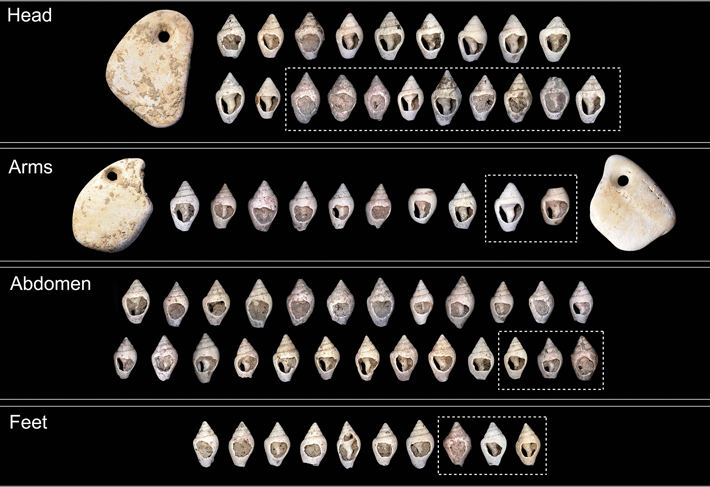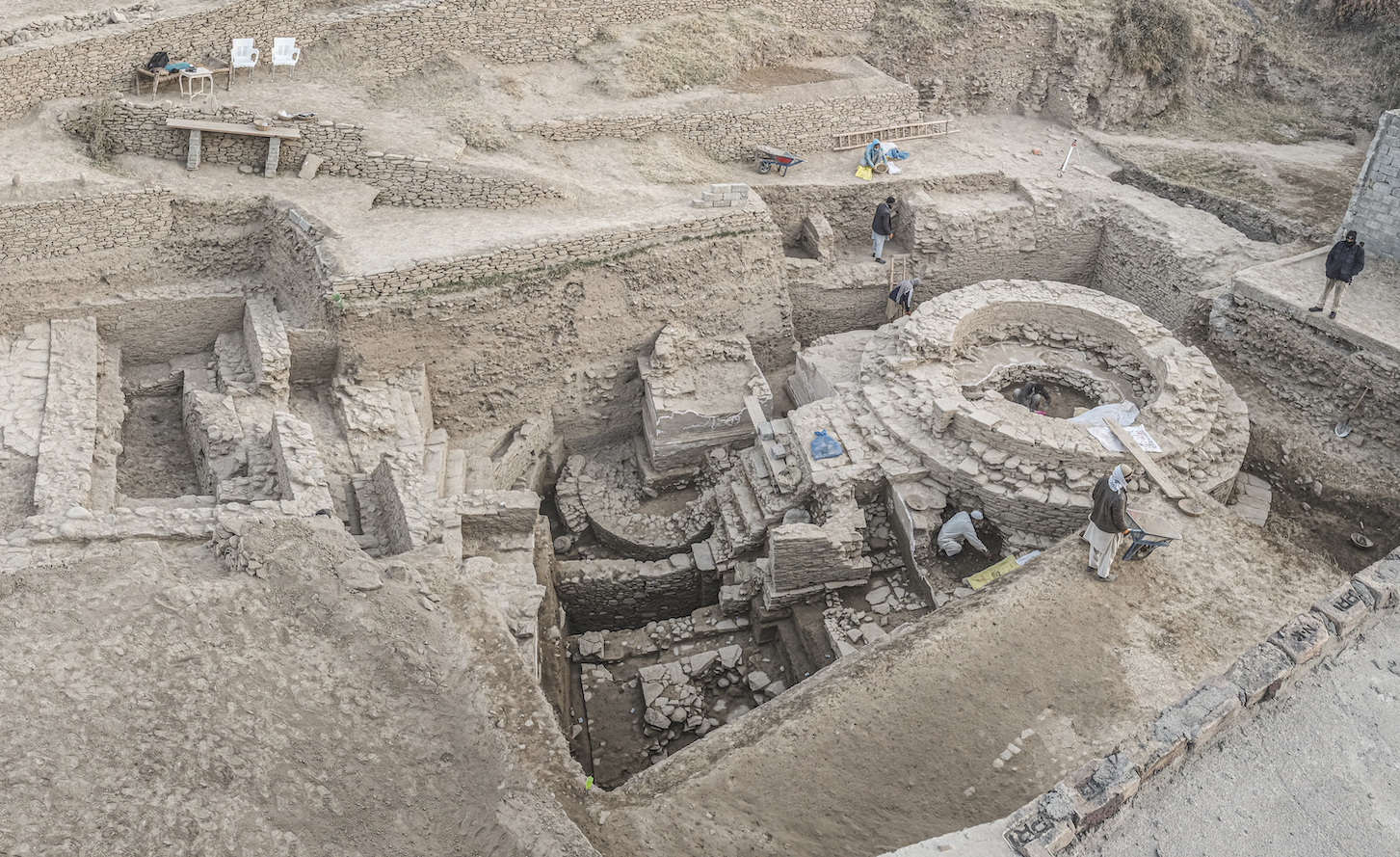
Archaeologists have learned more about the earliest known female infant burial in Europe, which was discovered several years ago. The remains of a Mesolithic girl were deposited in a shallow pit in the Arma Veirana Cave in Liguria, in northwest Italy, around 10,000 years ago. The discovery was noteworthy not only for its antiquity, but also because archaeologists found around 90 perforated shell beads and four large pendants in the girl’s grave. Using a variety of techniques, including 3-D photogrammetry and micro-CT scanning, the researchers have been able to re-create the layout of the child’s burial. The arrangement of the beads around the body suggests that they were sewn onto a garment that was wrapped around the baby’s body before she was interred. When she was alive, this garment likely functioned as a carrier or sling that would have allowed her parents to remain mobile—a necessity for Mesolithic hunter-gatherers—while keeping her close. “Archaeological traces of such an object are very difficult to gather, as a sling would need to be light and thus was likely made from materials that do not preserve well over time,” says Arizona State University archaeologist Claudine Gravel-Miguel.
The beads and pendants may have served as amulets meant to protect the infant. The ornaments’ worn condition suggests that they were not made specifically for the baby, whose teeth indicate that she only lived for between 40 and 50 days, but had been used by the community for a considerable period of time. The archaeologists theorize that, because the carrier and pendants failed to protect the child, they were discarded and interred along with her remains so they couldn’t be reused in the future. (To read about the original discovery, see “Italy” in Around the World, March/April 2022.)











